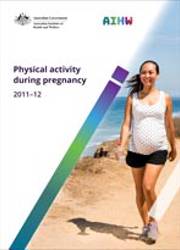Summary
Regular physical activity provides many benefits for the health and wellbeing of women during pregnancy, including fitness, weight management and psychological wellbeing. For a healthy woman with an uncomplicated pregnancy, physical activity is considered safe for both her and her unborn child.
This report looks at the types and amount of physical activity undertaken by women during pregnancy using the Australian Bureau of Statistics’ Australian Health Survey 2011–12. It compares activity levels for pregnant and non-pregnant women of the same ages and assesses these levels against the Australian physical activity guideline for adults.
Only 3 in 10 pregnant women met the physical activity guideline
When assessed against the Australian physical activity guideline for adults, 30% of pregnant women were sufficiently active, 54% were insufficiently active and 16% were inactive.
In comparison, just under half (47%) of women in the same age group who were not pregnant met the physical activity guideline for sufficient activity.
Two-thirds of pregnant women were active for fewer than 150 minutes per week
The median length of time spent on physical activity in the last week by pregnant women was 90 minutes. This was much lower than the average (mean) time of 151 minutes due to skewness caused by a small proportion of very active pregnant women.
The average of 151 minutes for pregnant women was made up of just under an hour (54 minutes) of walking for fitness, 73 minutes of walking for transport and 24 minutes on moderate and vigorous activities.
In comparison, the median length of time spent on physical activity in the last week for women who were not pregnant was 149 minutes and the average (mean) was nearly 4 hours (224 minutes). These women spent a similar amount of time walking for fitness and transport, with an extra 50 minutes on moderate and vigorous activities.
Just over half of pregnant women exercised for fitness, usually walking
While only 30% of pregnant women met the physical activity guideline, more than half (56%) did undertake some exercise specifically for fitness, recreation or sport. Of the pregnant women who exercised, one-third (34%) walked as their only form of exercise, 14% undertook some moderate activity (apart from walking) and 7% participated in some vigorous activity.
In comparison, around two-thirds (66%) of women who were not pregnant exercised for fitness, recreation or sport. Women who were not pregnant were less likely than pregnant women to walk as their only form of exercise (21%), and much more likely to do some vigorous activity (31%).
Moving forward
While healthy pregnant women can generally exercise safely, they may not be physically active during pregnancy due to concerns about harm to their unborn child and/or the many physical changes that occur over this time. Understanding these barriers—and providing individualised information and support for pregnant women—can help to improve participation in physical activity, which may also lead to improved health and wellbeing for both women and their babies.
1. Introduction
- Data source
- Terminology
2. Are pregnant women meeting the physical activity guideline?
3. How much time are pregnant women spending on physical activity?
4. What types of activity are pregnant women doing?
5. Discussion
- Moving forward
Appendix: Data Quality Statement
End matter: Data source and limitations; Acknowledgments; Abbreviations; References; List of figures; Related publications



